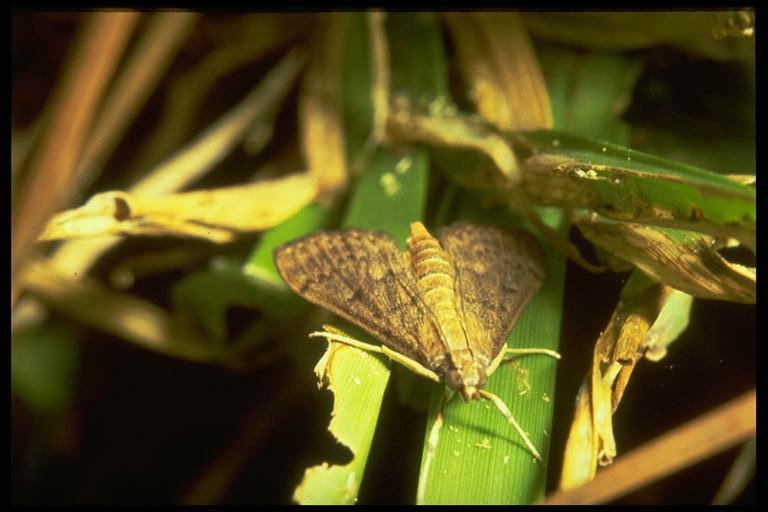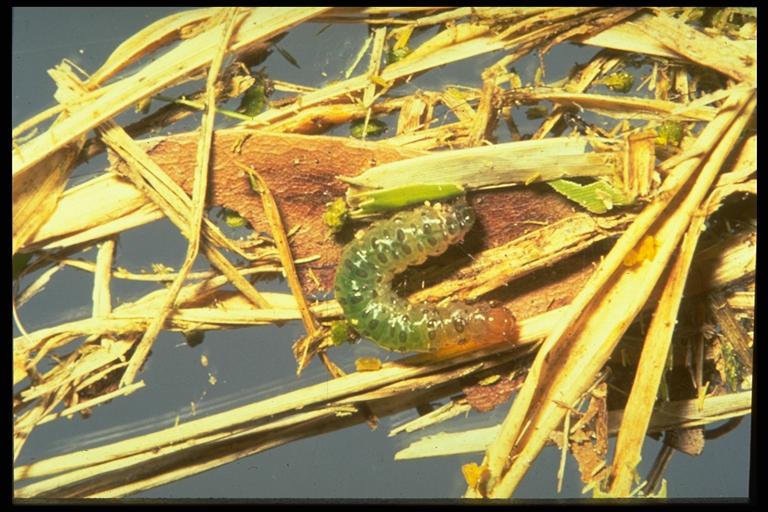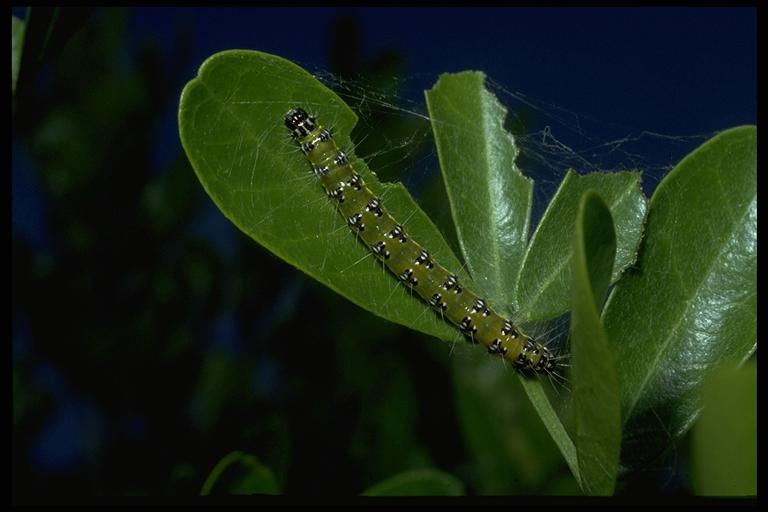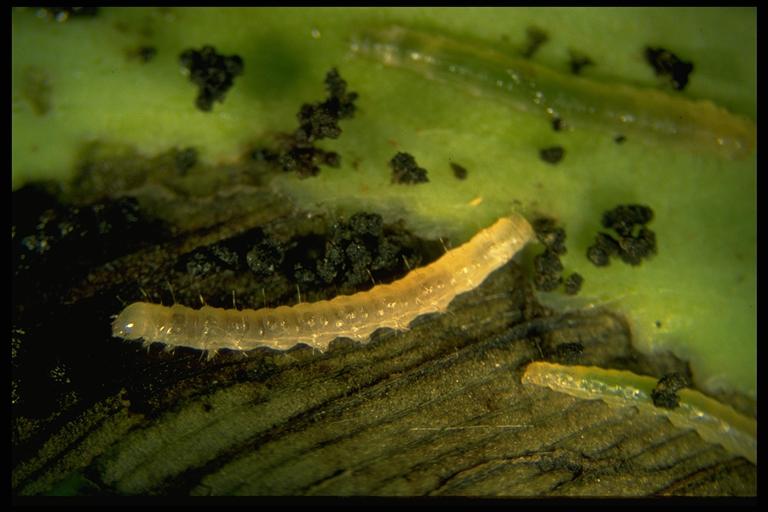
Tropical sod webworm, Herpetogramma phaeopteralis Guenée (Lepidoptera: Pyralidae), adult. Photo by G. McIlveen, Jr.
Common Name: Sod webworm
Scientific Name: Herpetogramma phaeopteralis Guenée
Order: Lepidoptera
Description: Adult moths are dingy brown moths with wing spans of about 3/4 inch. Wings are held flat over the back when at rest, giving the insect a triangular appearance. Caterpillars grow to almost 3/4 inch long , appearing translucent green with small dark-colored spots or plates arranged on each body segment and a dark, yellowish-brown head capsule.
Several other species of sod webworms occur in Texas, mainly from the genus, Crambus. These sod webworms can be distinguished in the adult stage by the way the moths roll their wings around their bodies when at rest rather than holding them out. Larvae are distinguished by the different patterns of plates (panicula) on their thoracic segments. Other common plant-feeding pyralid moths include the genista caterpillar, Uresiphita reversalis (Guenee) (See also the fall webworm) and the lesser canna leafroller, Geshna cannalis (Quaintanaca) (See canna

Tropical sod webworm, Herpetogramma phaeopteralis Guenée (Lepidoptera: Pyralidae), caterpillar. Photo by G. McIlveen, Jr.
leafroller).
Life Cycle: Females lay creamy white eggs in clusters of up to 15 eggs on grass blades, stems and turf debris. Tiny 1/32 inch long caterpillars hatch from eggs in 6 to 10 days and develop through 7 or 8 stages (instars) over 25 to 50 days, depending upon temperature. Larvae form a 3/8 inch long reddish-brown pupa in the thatch, sometimes within a shapeless bag spun by the caterpillar. Development from egg to adult occurs in about 6 weeks. Several generations occur during the year, but those occurring in the fall are larger, overlapping and potentially more damaging to turfgrass. This species only survives in areas with mild winters that allow all stages to continue to develop.
Habitat, Food Source(s), Damage: Caterpillars have chewing mouthparts. Adults have siphoning mouths.

Genista caterpillar, Uresiphita (=Tholeria) reversalis (Guenee) (Lepidoptera: Pyralidae), caterpillar on Texas mountain laurel. Photo by Drees.
Caterpillars feed during the night on turfgrasses, including Bermudagrass, St. Augustinegrass, centipedegrass, Bahiagrass, and zoysiagrass.
Injured grass blades initially appear notched and ragged as tissues are removed from the edges until the entire leaf is consumed. Injured turf is usually spotty within a lawn, but damaged areas enlarge as caterpillars migrate in search of more food. Heavily injured turfgrass may die but usually recovers. St. Augustine grass recovers more slowly than bermudagrass. Caterpillars can be forced up out of infested turfgrass by sprinkling a solution of liquid dishwashing detergent in water on the turf. Caterpillars will climb up on grass blades.
Pest Status: Outbreaks occur in turfgrass in Houston, Texas and elsewhere; numerous low-flying moths are usually associated with infestations; moths readily can be collected near lights at night; medically harmless.

Lesser canna leafroller, Geshna cannalis (Quaintance) (Lepidoptera: Pyralidae). Photo by Drees.
For additional information, contact your local Texas A&M AgriLife Extension Service agent or search for other state Extension offices.
Literature: Kerr 1955.